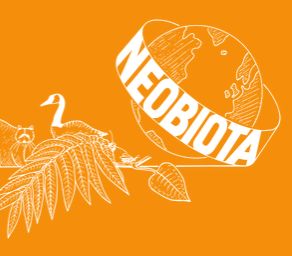Genetic identification of invasive alien species
Policy concern: invasive alien species, public health
![Red Swamp Crayfish (Procambarus clarkii) By Andrew Cannizzaro [CC BY 2.0]](https://www.bopco.be/wp-content/uploads/2024/03/Red-Swamp-Crayfish-Procambarus-clarkii-By-Andrew-Cannizzaro-CC-BY-2.0.jpg)

BopCo collaborates with several partners including Brussels Environment, the National Scientific Secretariat on Invasive Alien Species, Sciensano, and the Institute of Tropical Medicine to verify the identity of suspected invasive alien species using genetic methods.
What are invasive alien species?
Invasive alien species (IAS) are plants, animals, or other organisms that are introduced to a new environment, where they are not naturally found, and that have a negative impact on the native ecosystems, economies, and/or human health. These species can be introduced intentionally, such as for agricultural or ornamental purposes, or unintentionally, through global trade and travel.
The threats posed by invasive alien species
- Ecologic impact
IAS can outcompete, prey on, or bring diseases to native species, leading to declines or extinctions of native flora and fauna. They often disrupt local ecosystems, altering natural habitats and nutrient cycling processes. IAS are one of the leading causes of biodiversity loss worldwide.
![Procambarus clarkii or red swamp crayfish by webted [CC-BY-NC-ND-2.0]](https://www.bopco.be/wp-content/uploads/2024/03/Procambarus-clarkii-Amerikaanse-rode-rivierkreeft-By-webted-CC-BY-NC-ND-2.0.jpg)
![Chinese mitten crab or Eriocheir sinensis at Zoo Köln, by Vassil via Wikimedia Commons [CC BY-SA 4.0]](https://www.bopco.be/wp-content/uploads/2024/07/Zoo-Koln-Eriocheir-sinensis-by-Vassil-CC-BY-SA-4.0-via-Wikimedia-Commons.jpg)
![Asian lady beetle or Harmonia axyridis, by Andreas Trepte via Wikimedia Commons [CC BY-SA 2.5]](https://www.bopco.be/wp-content/uploads/2024/07/Asian-lady-beetle-By-Andreas-Trepte-CC-BY-SA-2.5-via-Wikimedia-Commons.jpg)
- Economic impact
IAS can cause significant economic losses. They can affect agriculture, fisheries, forestry, and tourism by e.g., damaging crops, clogging waterways, and degrading natural resources. The costs of managing and controlling IAS are also substantial.


- Human health
Some IAS pose direct threats to human health by spreading diseases or causing allergies. For instance, certain invasive plants can increase the prevalence of allergens in an area, while invasive insects can be vectors for diseases like malaria or the West Nile virus.

Factsheets
Addressing the issue of IAS involves prevention, early detection, and rapid response measures, along with management and public awareness efforts. These actions are crucial to protecting native biodiversity, maintaining healthy ecosystems, and minimizing economic and health impacts.
To facilitate the identification process of IAS, BopCo has prepared several factsheets summarizing the possibilities to use publicly available DNA sequence data to reliably identify the invasive plants and animals listed by the EU (the Union list).
Compiling these IAS factsheets was made possible by the cooperation of the Belgian National Scientific Secretariat of Invasive Alien Species.
Partners & collaborators






